Adimarket, a subsidiary of Global Stem Cells Group, has announced an agreement with biotechnology company Alolotl Biologix to distribute biological products for regenerative medicine applications worldwide.
Adimarket, a subsidiary of Global Stem Cells Group (GSCG), and its subsidiary has announced an agreement with Phoenix, Arizona-based Alolotl Biologix to distribute the biotechnology company’s products for regenerative medicine applications worldwide.
Alolotl Biologix focuses on research to optimize the use of human biologicals and to develop biological-related products to foster regeneration and healing for a range of conditions, including orthopedic impairments, wound care, pain management, ophthalmic, cardiovascular, cosmetic, and more.
Adimarket will make the following amniotic liquid products available to qualified practitioners through its online store www.adimarket.net:
AxoBioFluid® C Amniotic Allograft Cryopreserved Liquid, cryopreserved liquid allograft derived from the amniotic membrane that provides structural tissue to advance soft tissue repair, replacement, and reconstruction. Product details:
Human allograft under FDA regulation 21 CFR Part 1271 and section 361 of the PHS
Immune privileged with anti-inflammatory and anti-bacterial properties
A rich source of growth factors, proteins, cytokines, hyaluronic acid, and collagen scaffolds
Contains extracellular matrix components for cellular attachment and proliferation
Cryopreserved for an extended shelf life
AxoBioFluid® physician benefits
Procedures are efficient and do not require special instrumentation.
• The use of AxoBioFluid® is billed as patient pays, which makes it a great alternative revenue source.
• A library of research papers to demonstrate efficacy degenerated tissue is provided.
AxoBioFluid® patient benefits
Relevant Conditions
AxoBioFluidâ C Amniotic Allograft Cryopreserved Liquid, cryopreserved liquid allograft derived from the amniotic membrane that provides structural tissue to advance soft tissue repair, replacement, and reconstruction. Product details:
Human allograft under FDA regulation 21 CFR Part 1271 and section 361 of the PHS
Immune privileged with anti-inflammatory and anti-bacterial properties
A rich source of growth factors, proteins, cytokines, hyaluronic acid, and collagen scaffolds
Contains extracellular matrix components for cellular attachment and proliferation
Cryopreserved for an extended shelf life
AxoBioFluidâ physician benefits
Procedures are efficient and do not require special instrumentation.
• The use of AxoBioFluid® is billed as patient pays, which makes it a great alternative revenue source.
• A library of research papers to demonstrate efficacy is provided.
AxoBioFluid® Amniotic Allograft Cryopreserved Liquid is a cryopreserved liquid allograft derived from the placental components of the amnion to advance soft tissue repair, replacement, and reconstruction. It is classified as minimally manipulated under FDA regulation 21 CFR Part 1271 and section 361 of the PHS. Benefits of AxoBioFluid® AxoBioFluid® is a human allograft fluid derived from the amniotic layer of the placenta. The two primary cell lines which reside in the amnion are human mesenchymal stromal cells (hMSC) and human amnion epithelial cells (hAEC). Both of these cells are considered to be pluripotent stem cells. AxoBioFluid® contains growth factors released while amniotic cells are grown in culture such as epidermal growth factor (EGF), vascular endothelial growth factor (VEGF), and transforming growth factor – beta (TGF-β). These proteins are essential for fetal growth and development and express significant therapeutic benefits when used as a treatment for various injuries and degenerative conditions. AxoBioFluid® is immuneprivileged, anti-inflammatory, anti-fibrotic, pro-vascular, and cytoprotective because of the cells being sourced from the amnion. These secreted factors also signal endogenous progenitor cells to promote regeneration and repair of damaged or degenerated tissue.
AxoBioFluid
Degenerative disorders such as osteoarthritis
• Joint pain
• Inflammatory conditions such as:
Bursitis
Tendonitis
Fasciitis
Epicondylitis
Soft tissue injuries such as:
Ligament & Tendon sprains
Muscle & Meniscus tears
Wound Care
AxoBioMembrane, a dehydrated allograft membrane patch derived from the amnion that advances wound repair, skin replacement, and reconstruction. Product details:
Human allograft under FDA regulation 21 CFR Part 1271 and section 361 of the PHS
Immune privileged with anti-inflammatory and anti-bacterial properties
Contains extracellular matrix components for cellular attachment and proliferation
Dehydrated and terminally e-beam sterilized for an extended shelf life.
AxoBioMembraneä Amniotic Allograft Membrane, like all allograft tissue products, has been subjected to recovery microbiological study and has been terminally sterilized with electron beam sterilization. It works by forming fibrin-elastin bonds at the wound site, ensuring excellent wound adherence. This generates a barrier that protects exposed nerve endings from irritants, providing pain relief while creating a favorable environment for tissue repair and regeneration. In addition, the AxoBioMembrane™ prevents excessive moisture loss by creating a vapor barrier at the wound surface. Growth factors present in the membrane are released into the wound bed, promoting angiogenesis leading to new blood supply needed for cellular migration, proliferation and ultimately, wound repair. Infection is one of the biggest concerns with chronic wounds. AxoBioMembrane™ functions as a bacteriostatic agent, which can inhibit the growth of bacteria at the wound site and reduce the rate infection. It has also been reported to have anti-fibrotic properties, which can reduce scarring. The membrane contains glycoprtoteins found exclusively in the amnion. AxoBioMembrane™ lacks specific surface antigens, which make it immune-privileged and anti-inflammatory.
AxoBioMembraneä physician benefits
Procedures are efficient and do not require special instrumentation.
AxoBioMembrane™ is billed as patient pays, which makes it a great alternative revenue source.
We provide a library of research and white papers to demonstrate efficacy.
AxoBioMembraneä patient benefits:
Pain Reduction
Wound Adherence
Less Scarring
Faster Healing
Neovascularization
Wound Barrier
Anti-bacterial
Immune Privileged
AxoBio products are available to purchase on the Adimarket Website.
For more information, visit the Adimarket regenerative medicine online store website, email info@stemcellsgroup.com, or call 305-560-5337.
About Global Stem Cells Group
Global Stem Cells Group (GSCG) is a worldwide network that combines seven major medical corporations, each focused on furthering scientific and technological advancements to lead cutting-edge stem cell development, treatments, and training. The united efforts of GSCG’s affiliate companies provide medical practitioners with a one-stop hub for stem cell solutions that adhere to the highest medical standards.

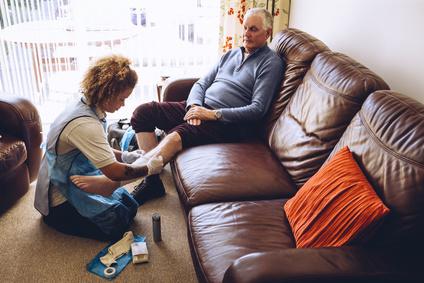



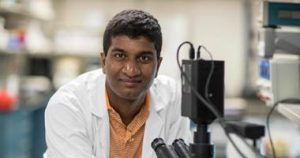

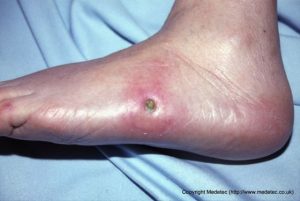
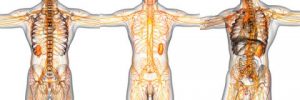
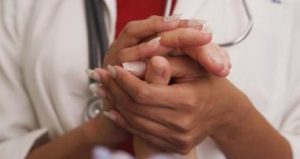 I have written about so many things over the past years… Maybe now is a good time to announce that I am writing a book called Hear Our Cry, an autobiographical story about 20 years of wound care and limb salvage. The process has had quite an impact on me, reviewing all the pictures and notes from my wound patients from the past two decades.
I have written about so many things over the past years… Maybe now is a good time to announce that I am writing a book called Hear Our Cry, an autobiographical story about 20 years of wound care and limb salvage. The process has had quite an impact on me, reviewing all the pictures and notes from my wound patients from the past two decades.